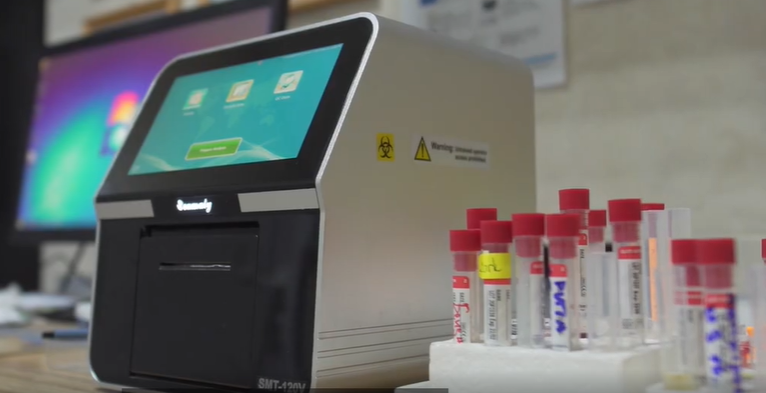With the progress of science and technology, the development of hospital testing technology has also continued to put forward higher and newer requirements for medical equipment. Blood cell analyzers, urine analyzers, and biochemical analyzers are common test equipment in hospitals. The following is a brief history of the development of these medical devices.
1. Blood cell analysis equipment
Blood cell analysis equipment is an instrument that can analyze the number of different types of cells in human blood and related parameters. This instrument has a certain guiding significance for the diagnosis of most diseases and is one of the instruments that are very widely used in clinical testing in hospitals.

Since the 1950s, the introduction of blood cell counters designed through the principle of electrical impedance technology has revolutionized the analysis of blood cells in clinical tests. This technology was widely used in the design of fully automated hematology analyzers. in the 1970s, the application of technologies such as floating boundary markers enabled platelet counting in whole blood. in the 1990s, three-fraction hematology analyzers became widely used and automatic blood cell smear and sorting instruments were introduced. Since the beginning of this century, the automatic 5-fraction hematology analyzer has become the main instrument for routine testing in the laboratory departments of large hospitals.
As the sample volume of blood analysis continues to rise dramatically in recent years, a new blood cell analysis system, the blood cell analysis line, has been introduced to the market and achieved very good results. This analysis system is to link one or several high sex blood cell analyzers with one or several blood cell smear and staining all-in-one machines, together forming a blood cell analysis system with higher automation, full use of analysis speed and more significant intelligent effect.
2. Urine analysis equipment
Urine analysis refers to the morphological analysis of chemical substances and shaped components in urine. It includes routine analysis of urine, detection of organic components in urine (such as urine red blood cells, white blood cells, etc.), quantitative determination of protein components, and determination of urinary enzymes. Urine examination is of great importance for clinical diagnosis, judgment of efficacy and prognosis.
In the 1950s, urinalysis reagents were introduced to bring convenience to urinalysis, and in the 1970s, semi-automatic urinalysis solutions were used. in the 1980s, automatic urine sediment analyzers were successfully developed to achieve quantitative urinalysis and improve the sensitivity and specificity of urinalysis. in the 1990s, automatic urinalysis and urine sediment analyzers were introduced to the market one after another. This has not only reduced the labor intensity of clinical laboratory personnel, but also greatly improved the speed of urinalysis.
In recent years, urinalysis has been rapidly developing in two areas. First, "machine vision" technology is applied to urine sediment analysis. The CCD image of the formed fraction can also be reproduced on the display by electronic computer, which can greatly reduce the false positives in the process of urine sediment analysis. The second is to link the automatic urine dry chemistry analyzer with the automatic urine sediment analyzer via a track to form an automatic urinalysis workstation.
3. Clinical biochemical analysis equipment
Clinical biochemical test techniques, test items and test instruments have a leading position in the development of clinical testing disciplines. Clinical biochemical testing instruments were first produced in the 1950s.
In the 1960s, semi-automatic biochemical analyzers were introduced, and in the 1970s, automatic biochemical analysis began to be used in clinical laboratories, and in the late 1980s, China began to develop semi-automatic biochemical analyzers. By now, dozens of Chinese manufacturers have been able to produce semi-automatic biochemical analyzers, and in the late 1990s, some Chinese companies and research institutions started to develop fully automatic biochemical analyzers.
Today, automatic biochemical analyzers have embarked on a rapid path of development. Fully automatic biochemical analyzers are more automated, have a wider range of analytical items, are more convenient to configure, are faster to analyze, and are more convenient to maintain.
With the progress of modern medical treatment, biochemical analyzers are always following the footsteps of the times and constantly innovating to meet our testing needs. In the future, along with the increasing maturity of technological development, biochemical analysis instruments are gradually developing in the direction of openness, rationalization, automation, intelligence, combination, networking and sophistication. We expect that these instruments will better benefit our lives and make more contributions to the medical testing industry.



